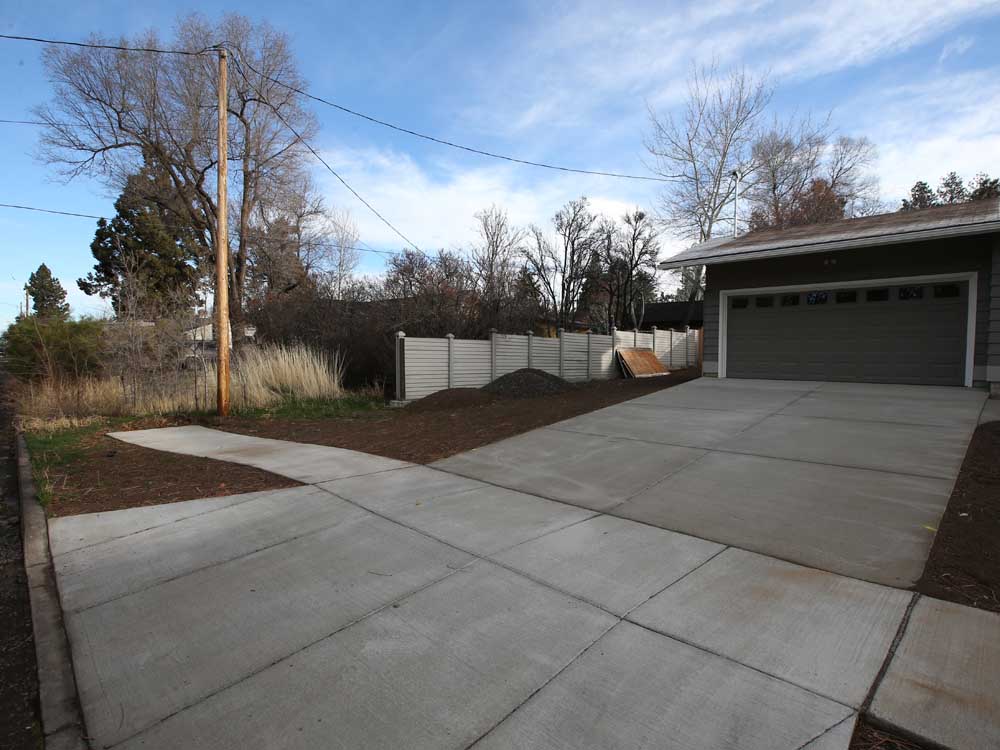Bend council debates development code changes
Published 12:00 am Thursday, February 8, 2018

- A sidewalk to nowhere on Bend's east side. (Andy Tullis/ Bulletin file photo)
Bend city councilors took on code changes that would allow more units in apartment complexes near parks, fewer sidewalks to nowhere and sandwich-board signs on streets during a late-night meeting Wednesday.
The City Council had not voted by press time to give initial approval to development code updates that spell out new rules for sidewalks, signs, open space and the Bend Central District. All changes would require an additional vote on Feb. 21, and wouldn’t take effect until the end of March.
One change aims to make it easier for property owners to build granny flats or otherwise renovate their homes. Right now, homeowners who live within 600 feet of a sidewalk but don’t have one in front of their homes have to build a sidewalk, even if it ends up being the only stretch of pavement on a street.
If a utility box or tree is in the way or if topography makes paving difficult, building a sidewalk can cost more than the renovation. An amendment to the development code will allow some homeowners to instead pay a fee — likely $8 a square foot — that the city could then use to build a sidewalk somewhere in the general area.
“We’ll take the sidewalk funds from these payments and apply them where we get the most bang for our buck,” City Engineer Ryan Oster said.
The amendment would apply to all property owners, not just those within 600 feet of a sidewalk. Removing that requirement will eliminate confusion for property owners and city employees, Oster said.
But Karna Gustafson, vice president of government affairs for the Central Oregon Builders Association, said eliminating the 600-foot requirement could have an unintended cost of discouraging potential affordable homes because property owners would be discouraged from building new accessory dwelling units. She suggested requiring the sidewalks or fees in lieu only in areas close to schools or the downtown core where sidewalks would be used.
Another code change would allow businesses outside of downtown to place portable signs — such as A-frame chalkboards listing a restaurant’s daily specials — on sidewalks outside to attract customers.
Apartment complexes may be able to squeeze in more units if residents can walk less than a quarter-mile on an accessible trail to a public park. City law now requires that at least 10 percent of a lot containing an apartment with 20 or more units be public open space, and an amendment would halve that requirement for apartments near parks.
Karon Johnson, a board member of the Old Farm District Neighborhood Association, said she and other neighborhood association members were concerned that less open space at apartment complexes would give small children less room to safely play outside near their homes. Making sure paths to parks meet standards laid out in the Americans with Disabilities Act of 1990 would help, she said.
“Access to the park should be as safe as access to the apartment’s own common ground,” she said.
The code also includes street guidelines for Second and Fourth streets in the Bend Central District, a 206-acre area that extends south from Revere Avenue to railroad tracks between the parkway and Fourth Street. The city identified the area as a good location for dense development, and road standards in the city’s development code call for wider sidewalks and shared-lane markings, or sharrows, that indicate that bicycles and cars travel in the same lane.
In other business, the council was expected to form a temporary climate action committee and approve a one-year contract extension with the city firefighters’ union. Union-represented firefighters, who are now paid about 5 percent less than their peers in comparable Oregon cities, would get 3 percent raises in the fiscal year that starts in July.
— Reporter: 541-633-2160; jshumway@bendbulletin.com








